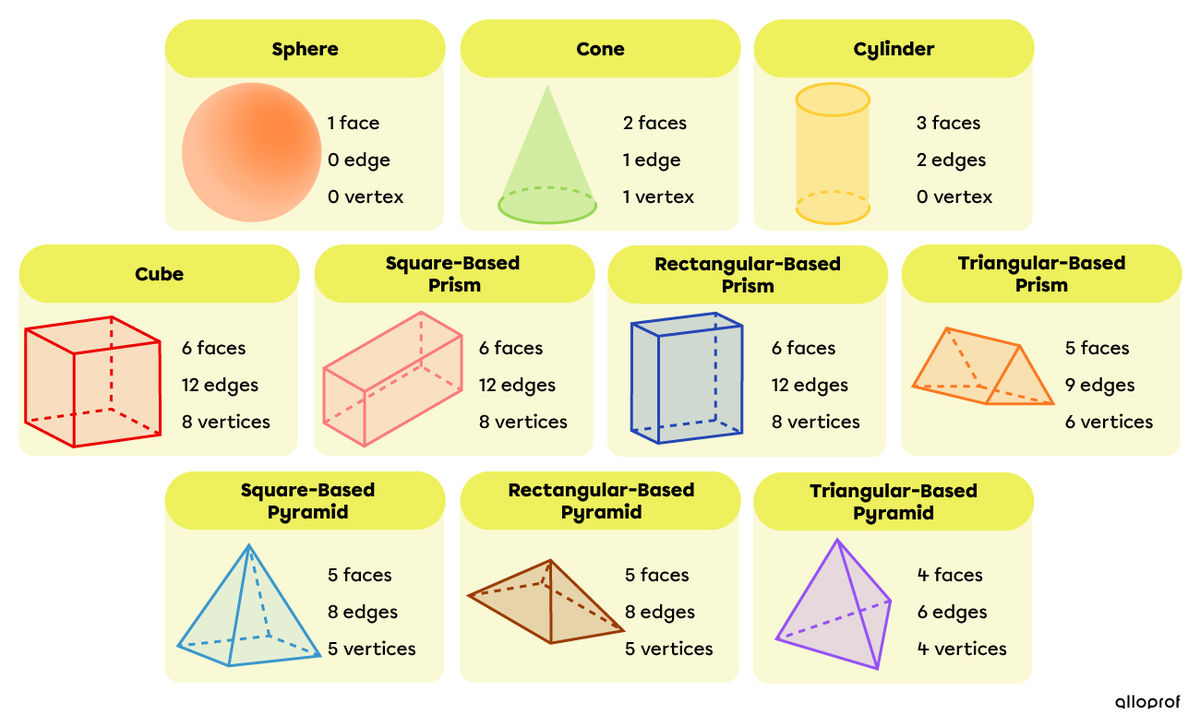A face is a flat (plane) or curved surface on a solid. It can also take the shape of a plane figure, such as a square or circle.
Examples:
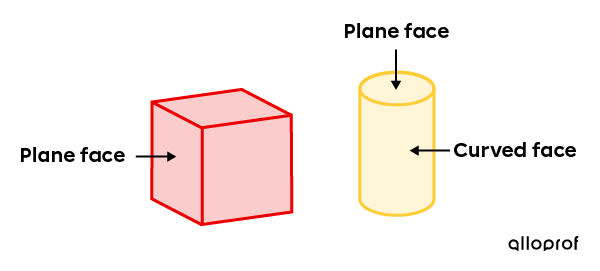
To know how to represent the faces of a solid, read the concept sheet Constructing the Nets of Solids.
A solid with at least one plane (flat) face can slide.

A solid with at least one curved surface can roll.
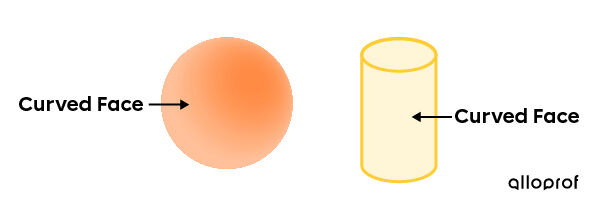
A solid can have both plane and curved faces, so it can slide and roll.

A face is a plane or curved surface on a solid that is bounded by one or more edges.
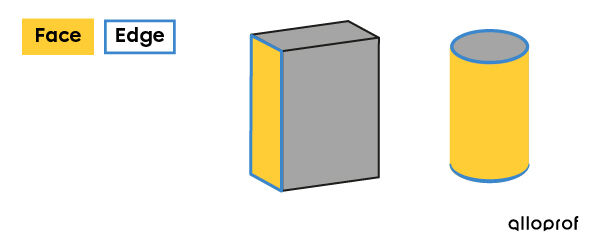

A face can also be the base of a solid.
Examples:
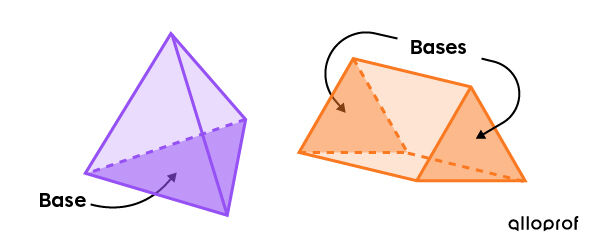
To learn more about the bases of a polyhedron, read the Polyhedrons concept sheet (coming soon).
An edge is a line segment where two faces meet.


To help find the total number of edges in a solid, you can colour all the edges that you count.
Example:

A vertex is the point where the edges of a solid meet.

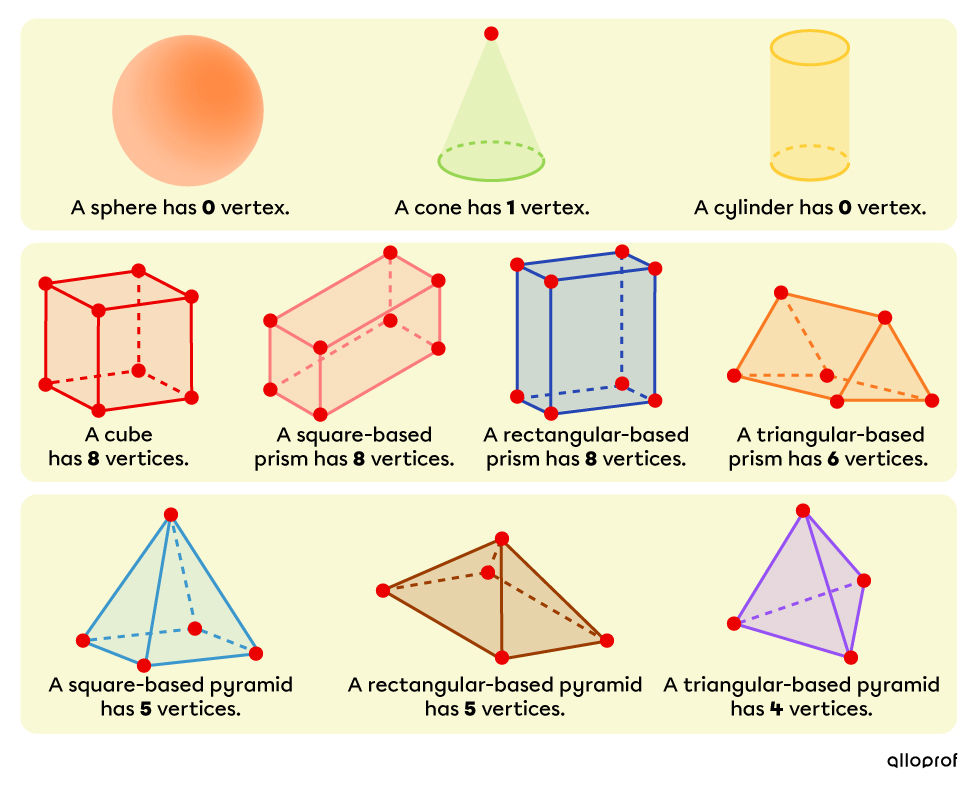
To help you find the total number of vertices in a solid, you can colour each vertex that you count.
Example:

Here is the number of faces, edges and vertices of different solids.
